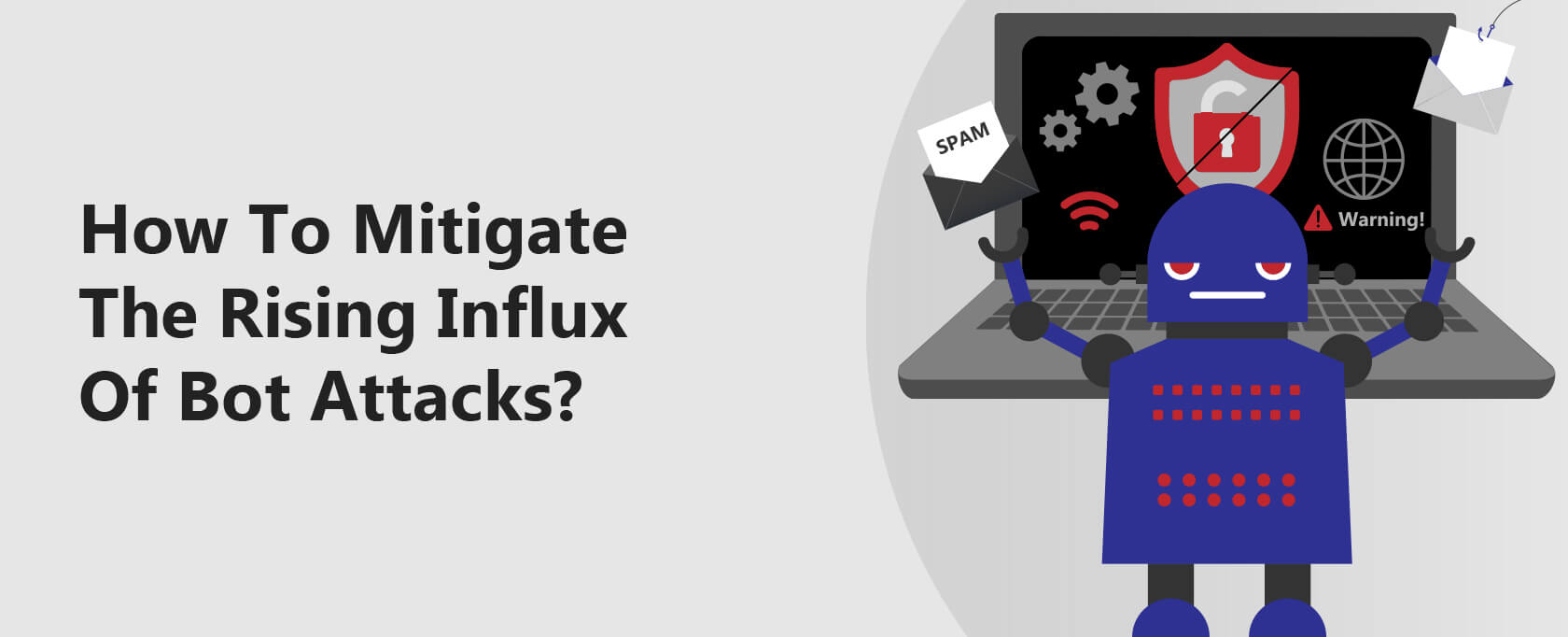How To Mitigate The Rising Influx Of Bot Attacks?
Over the past two years, the increasing sophistication of cyber threats has become a well-known issue.
While ransomware and phishing attacks continue to dominate the headlines, bot attacks are an emerging threat that demands our attention.
Bots play a crucial role in the digital landscape, automating various functions and enhancing our online experience.
They gather information, structure web pages, and perform many other essential tasks. Unfortunately, cybercriminals have found ways to exploit these bots for malicious purposes.
The surge in digitization has inadvertently contributed to a significant increase in bot attacks.
As businesses transition more of their operations online, cybercriminals have seized new opportunities to launch these attacks. In 2021 alone, the volume of bot attacks surged by 41%.
While the rise in such attacks is concerning, the primary challenge lies in the lack of awareness and understanding of bot attacks and the strategies to mitigate them.
Increasing education and awareness about these threats is essential to protect our digital infrastructure.
Bots, designed to automate tasks online, have been hijacked by malicious actors for harmful purposes.
The piece sheds light on the nature of bot attacks, their execution, and highlights some prevalent forms, including brute force, distributed denial of service (DDoS), and device bricking attacks.
To counteract these attacks, strategies such as scrutinizing web traffic, enforcing robust password practices, securing potential bot entry points, adhering to a zero-trust framework, and continually reassessing bot defense methods are advised.
Raising awareness and deepening the understanding of bot attacks are crucial steps toward effectively tackling this burgeoning challenge.
What Are Bot Attacks and How Do They Happen?
In layman’s terms, a bot attack refers to an instance where threat actors hack or manipulate web bots to carry out malicious tasks.
These bot attacks feature automated web requests to abuse, defraud, or disrupt websites, end-users, or APIs. In contrast to the “good” boat already working on the internet, these bot attacks happen through a collective interlinked network of compromised divides called botnets.
These bot attacks occur through malware. The threat actor infiltrates the target device with the help of malware.
Now known as the “bot herder” device, the malware-infected device becomes the headquarters for a hacker to carry out large-scale attacks using communication protocols such as HTTP.
Some common types of devices that the bot herder targets for malware infections are:
- IoT devices such as smartwatches, speakers, TVs, etc
- Wifi Routers
- Web servers
- Network bridges.
Now malware-ridden, these devices are known as zombie computers. They become the modus Operandi to carry out large-scale attacks.
The hacker controls them harder by sending our instructions via remote programming using the Command-and-Control (C&C) server.
These C&C servers are particularly crucial to a botnet and can function in one of the following two orders:
- Client-server: a centralized command model that uses IRC websites, domains, or networks to send commands. It is a somewhat dated model that operates using a single bot herder, which leaves the network vulnerable to discovery. This C&C server is rarely ever used now by threat actors.
- Peer-to-Peer: it is a decentralized command model that doesn’t leave itself vulnerable to discovery. The model works by imprinting zombie computers with instructions that help mask the bot herder’s identity. Since the P2P approach helps evade cybersecurity measures, it is a popular attack vector nowadays.
Some Common Types of Bot Attacks
Bot Attacks occur in various ways, and understanding these attack methods is one way to mitigate them better. Some of the most common types of bot attacks are as follows:
Brute Force Attacks
These attacks happen against weak password security and are used to access accounts and networks. The attack methods rely on using rapid, repetitive password guessing techniques.
The malware communicates with the affected servers to get real-time feedback on password attempts to guess the correct password using leaked credentials or personally identifiable information.
Distributed Denial of Service (DDoS) Attacks
A DDoS is one of the most common types of bot attacks you could come across. The attack method features flooding the web traffic for it to crash down, causing performance degradation. A DDoS attack can prove financially and reputationally damaging to a website.
Device Bricking
A device bricking attack involves a threat actor launching bots for a device bricking attack over multiple surfaces.
With bricking attacks, the target devices get a malware infection that deletes the device’s content and even removes the evidence of the primary attack.
A bricking attack renders the device useless.
How to Mitigate Bot Attacks?
A bot attack happens by taking advantage of vulnerabilities within your system to steal critical information, install malware, distort web analytics, or even damage SEO.
Since these bot attacks are capable of causing extensive scale damage, cybersecurity experts have come up with several solutions to mitigate them. Some of the solutions that you can adopt are as follows:
Analyze and monitor your web traffic
Getting more traffic on your website might seem like an ultimate dream; however, not every time that high web traffic can mean something good is up with your business.
It is, therefore, crucial to analyze and monitor our web traffic and look for a few telltale signs of a bad bot issue, such as:
- Average session duration: it should be more than a mere few seconds
- Geo-location: it shouldn’t be non-discernible or from all over the world
- Traffic source: it is suspicious if the traffic source is direct for a particular day when it usually isn’t
- Bounce rates: the bounce rate shouldn’t be more than 95%
- Service provider: the traffic’s service provider should vary
If you notice any or all of these events occurring and cannot trace them back to the source, it is time to take more proper measures.
Implement a firm password hygiene policy
Strong passwords are crucial to maintaining security and privacy for your sensitive data. Ensure that your employees use strong passwords and a secure password manager to help maintain password hygiene.
Apart from that, it is also crucial that you look into failed login attempts within your organizational networks. Rapid volume growth can be problematic, so it is best to keep an alert for such occurrences.
Protect all bad bot access points
Admittedly bad bots mostly attack websites; however, that does not mean you can overlook every other access point. Various exposed APIs, mobile networks, or apps can prove to be the gateway for a mean bot attack.
It is, therefore, crucial to maintain a strict eye over them.
Maintain zero-trust policy
Zero Trust measures work on the philosophy of “guilty until proven innocent.” With this tactic, it is best to maintain a step-by-step evaluation, interrogation, and detection of each bot request.
Once the security module has been classified a bit as “good,” only then let it access your website.
Regularly evaluate bot mitigation techniques
Maintaining a regular overview of bot mitigation techniques you implement within your organization is crucial.
Since cybercriminals are always on the go to update their attack strategies, you should remain aware of evolved attack methods and implement relevant bot mitigation techniques.
Final Words
Bot attacks might seem innocent, but they can be a hassle for every website and business owner. A bot attack can cause damage to your business’s reputation and most likely cause significant financial damages. A disruption in your website might also lead to long-term loss of clients.
Therefore, it is crucial to look into mitigating these attacks. Like every cybersecurity issue, proper mitigation is the best defense against such bot attacks to help you remain secure and protect you from the worst damages.


